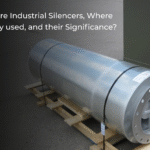Noise is one of the most common challenges in industrial environments, affecting both employee productivity and health. Heavy machinery, equipment, and high-decibel operations contribute to excessive noise levels that, if left unaddressed, can lead to hearing loss, stress, and reduced efficiency. To counter this, one of the most significant innovations in noise control has been the development of acoustic operator cabins. These specialized cabins are designed to create a quieter workspace for operators within noisy environments, promoting health, safety, and productivity. This article explores the latest advancements in acoustic operator cabins and their impact on industrial workplaces.
The Role of Acoustic Operator Cabins in Noise Control
Acoustic operator cabins also known as Sound Proof Operator Cabins are enclosed structures engineered to shield operators from the high noise levels typical of industrial settings. By acting as soundproofed zones, these cabins protect workers from the immediate and long-term health risks associated with exposure to loud sounds, such as hearing impairment, fatigue, and stress. Additionally, these cabins improve communication and concentration for operators who often work with complex machinery or sensitive equipment requiring high levels of focus. Acoustic cabins thus contribute to a safer and more productive work environment, allowing employees to work efficiently and with greater ease.
Innovations in Acoustic Cabin Design
In recent years, advancements in materials, design, and technology have propelled the development of acoustic cabins, enabling them to deliver enhanced noise reduction and comfort. Some of the most notable innovations include:
High-Performance Soundproofing Materials: Acoustic operator cabins now incorporate advanced materials such as multi-layered composites, high-density soundproof panels, and specialized insulation foams. These materials are designed to absorb and deflect sound waves effectively across a range of frequencies, providing a much quieter environment. Innovations like viscoelastic materials—known for their damping properties—are particularly effective in reducing vibrational noise from surrounding equipment. The Acoustic Isolation Membrane is also ideal for sound insulation and it effectively helps block sound transfer. It is available in 3mm and 6mm thicknesses and can be installed in walls, ceilings and floors to improve soundproofing of an enclosure.
Modular Construction: Modular acoustic cabins offer flexibility and scalability, allowing organizations to easily assemble and disassemble cabins as required. Modular cabins can be customized to specific noise reduction needs and operational layouts, and they are relatively quick to install. This feature is highly beneficial in industries where layouts frequently change or where space constraints demand adaptable solutions. Modular designs also offer cost-effectiveness, as they can be repurposed or reconfigured for various tasks and locations.
Enhanced Airflow and Climate Control Systems: A common challenge with enclosed cabins is maintaining proper ventilation and temperature control without compromising soundproofing. Advanced acoustic cabins now come with specialized airflow and climate control systems that allow fresh air circulation and temperature regulation while minimizing noise intrusion. These systems are crucial for operator comfort, especially in high-temperature environments, ensuring operators remain alert and focused.
High-Visibility Panels and Enhanced Safety Features: Newer acoustic cabins are designed with high-visibility windows and panels, which allow operators to monitor their surroundings without leaving the protected enclosure. These panels are often made with materials that provide both sound reduction and shatter resistance, ensuring safety. Moreover, many cabins now come equipped with emergency alarms, fire-resistant materials, and easy-exit systems, emphasizing safety alongside noise control.
Impact of Acoustic Operator Cabins on Worker Health and Productivity
The adoption of acoustic operator cabins has brought significant benefits to both operators and their organizations. These benefits include:
Improved Health and Well-being: By protecting workers from excessive noise, acoustic cabins reduce the risk of hearing loss, fatigue, and stress-related illnesses. Prolonged exposure to high noise levels has been linked to increased heart rate, hypertension, and sleep disturbances, all of which contribute to health deterioration over time. Acoustic cabins provide a safe refuge from these effects, enabling workers to maintain better health and well-being.
Enhanced Focus and Productivity: Noise can be a major distraction, leading to errors, slower response times, and reduced efficiency. Acoustic cabins allow operators to concentrate on their tasks without interruption, enhancing their focus and productivity. Studies have shown that quieter environments contribute to improved cognitive function and task performance, which is particularly important for machine operators, engineers, and supervisors handling complex or sensitive operations.
Better Communication: Within an acoustic cabin, operators can communicate more clearly with other workers and supervisors, either through internal communication systems or simply by reducing background noise interference. Improved communication reduces the likelihood of misunderstandings, mistakes, or delays, promoting a smoother and more coordinated workflow. As the demand for quieter, safer work environments grows, the evolution of acoustic cabins will continue to reflect technological improvements and a greater emphasis on worker health and productivity. These advancements underscore the importance of noise control innovations in shaping the modern industrial workplace. In this way, acoustic operator cabins will remain essential components of sound management, creating more conducive environments for efficiency, safety, and well-being.






